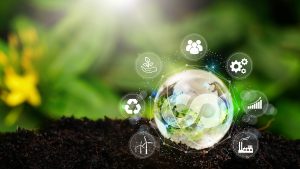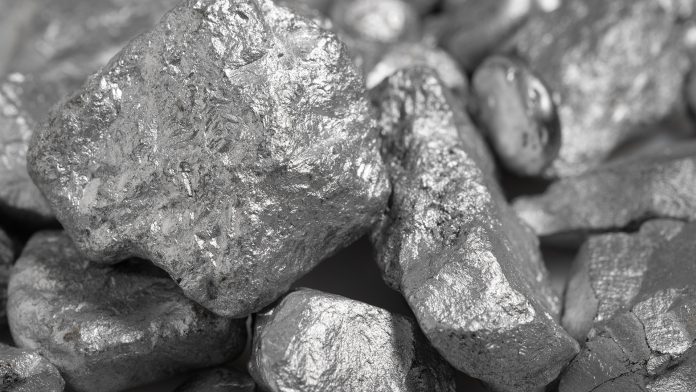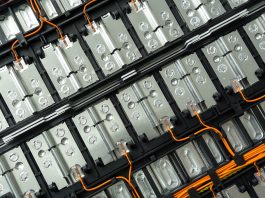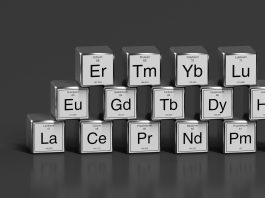Researchers from the Technical University of Munich have discovered that biosorption of rare earth elements by bacteria is fast and efficient, allowing the recycling and reuse of the metals.
As the global shift to green energy takes shape, it is increasingly advantageous to move to a circular economy where resources are recycled and reused. Rare earth elements (REEs), which are crucial to this clean transition, are typically mined from an open pit which can negatively impact the environment. This seems counterproductive, and it is, therefore, important that another way to extract these metals is found.
Now, German scientists from the Technical University of Munich have found a new method that allows for rare earth elements to be recycled efficiently. The team discovered that the biomass of some exotic photosynthetic cyanobacteria can efficiently absorb REEs from wastewater, for example, derived from mining, metallurgy, or the recycling of e-waste. The rare earth elements that are absorbed by the biomass can then be washed and collected for reuse.
“Here, we optimised the conditions of REE uptake by the cyanobacterial biomass, and characterised the most important chemical mechanisms for binding them. These cyanobacteria could be used in future eco-friendly processes for simultaneous REE recovery and treatment of industrial wastewater,” said Dr Thomas Brück, a professor at the Technical University of Munich and the study’s last author.
The work, ‘Rare earths stick to rare cyanobacteria: future potential for bioremediation and recovery of rare earth elements,’ is published in Frontiers in Bioengineering and Biotechnology.
What are rare earth elements and why are they important?
Rare earth elements are a group of 17 chemically similar metals that generally occur at low concentrations (between 0.5 and 67 parts per million) within the Earth’s crust. As they are important in modern technology, for example, being used in mobile phones, cameras, and renewable technologies like wind turbines, demand for the minerals has gradually increased and this rise is projected to continue.
The increasing demand for rare earth elements means that they are expensive, with a kilo of neodymium oxide currently costing approximately €200, while the same amount of terbium oxide costs around €3,800.
China has a near-monopoly on the mining and production of REEs, which means that they control the price. Because of this, it is important that supply chains are secured for the rest of the globe, and the team’s new innovation could be key to this.
Unlocking the potential of biosorption
Biosorption is a metabolically passive process for the fast, reversible binding of ions from aqueous solutions to biomass. The team evaluated the potential for biosorption of the rare earth elements lanthanum, cerium, neodymium, and terbium by 12 strains of cyanobacteria in laboratory culture.
Previously, many of these strains had not been assessed for their biotechnological potential. The strains were sampled from highly specialised habitats, for example, crevices in rocks in South Africa, polluted brooks in Switzerland, and arid soils in Namibian deserts.

It was discovered that an uncharacterised new species of Nostoc had the highest capacity for biosorption of ions of these four rare earth elements from aqueous solutions, with efficiencies between 84.2 and 91.5 mg per g biomass. Synechococcus elongates, Desmonostoc muscorum, Calothrix brevissima, and an uncharacterised new species of Komarekiella were also found to be efficient. The team found that Scytonema hyalinum had the lowest efficiency at 15.5 -21.2 mg per g.
Acidity also had a strong role in the efficiency of biosorption, with the process being highest at a pH of between five and six, and decreasing steadily in more acid solutions. When there was no competition for the biosorption surface on the cyanobacteria biomass from positive ions of other non-REE metals, the process was the most efficient.
The team used infrared spectroscopy to establish which functional chemical groups in the biomass were mostly responsible for the biosorption of the rare earth elements.
“We found that biomass derived from cyanobacteria has excellent adsorption characteristics due to their high concentration of negatively charged sugar moieties, which carry carbonyl and carboxyl groups. These negatively charged components attract positively charged metal ions such as REEs, and support their attachment to the biomass,” said first author Michael Paper, a scientist at the Technical University of Munich.
Biosorption has many potential applications
The researchers concluded that biosorption of rare earth elements by cyanobacteria is possible even at low concentrations of the metals. The process is also fast, as most cerium in the solution was biosorbed within five minutes of starting the reaction.
“The cyanobacteria described here can adsorb amounts of REEs corresponding to up to 10% of their dry matter. Biosorption thus presents an economically and ecologically optimised process for the circular recovery and reuse of rare earth metals from diluted industrial wastewater from the mining, electronic, and chemical-catalyst producing sectors,” said Brück.
“This system is expected to become economically feasible in the near future, as the demand and market prices for REEs are likely to rise significantly in the coming years,” he predicted.









